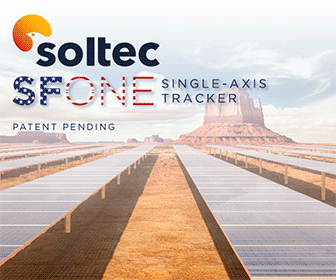Natcore Negotiating Technology License For Ghana Solar Farm
PSECC Solar Farms Ltd, a climate change mitigation company and developer of solar farms, has turned to Natcore Technology Inc. (TSX-V: NXT; OTCQB: NTCXF) to help restore financial viability to a 20 MW Ghanaian project that was threatened by a 29% reduction in feed-in tariffs.
A feed-in tariff (FIT) is an economic policy created to promote active investment in and production of renewable energy sources. Feed-in tariffs typically make use of long-term agreements and pricing tied to costs of production for renewable energy producers. In practice, feed-in tariffs may be payments to ordinary energy users for the renewable electricity they generate.
The previous Ghanaian government had set the feed-in-tariff at about $0.137 per KWh, but the government appointed late in December 2016 has recently said that the signing of new Power Purchase Agreements (PPA) can have a maximum FIT payment no greater than $0.10 per KWh.
"The lower FIT payment meant I had to look for the best possible technology choice for solar panels," says Alan Brewer, CEO and Director of PSECC (www.pseccsolarfarms.com). "That's when I contacted Natcore, because the increase in power using their technology meant that the revenues could be increased by 10% or more and the project could once again be financially viable."
PSECC had gained a Provisional License in December 2016 for the 20 MW solar farm at Simbrofo in Ghana. Two additional 20 MW farms are planned for that venue. A commitment for financing the projects has been obtained from a Polish bank via the European Central Bank. The estimated build cost of the first 20MW solar farm at Simbrofo will be $28.776 million.
By licensing Natcore's technology in Ghana, PSECC would also gain exclusive access, on a regional basis, to Natcore's newest advances, including laser-processed, back-contact foil cell technology, black silicon and others as they come on line.
Last month, Natcore and PSECC signed a Memorandum of Understanding under which PSECC would engage Natcore to develop solar projects within the United States.
"We estimate that the fee for a license agreement of this size will be about $2.5 million," says Chuck Provini, Natcore President and CEO. Although we haven't finalized negotiations, we're able to make a projection based on the savings anticipated by using our technology."
"From the beginning, our mantra has been 'raise the efficiency, lower the cost,'" says Provini. "Our new Natcore Foil Cellâ„¢ will do both. It has achieved an efficiency of 20.7% so far, which is already a relative 20% higher than most commercially available solar cells, and it uses a revolutionary laser process with a novel metallization strategy, to create a high-efficiency all-back-contact cell architecture at low cost. Importantly, it also eliminates the need for silver, one of the highest-cost components of a conventional solar cell."
PSECC has formed Simbrofo Light Ghana Ltd, a special purpose vehicle to take this project forward.
This is the fifth project to be assigned to Natcore as a result of its Best-of-Breed program. Under that program, Natcore functions as a consultant on the design and construction of solar cell/solar panel fabrication facilities and solar farms. Natcore also serves as a general contractor, hiring subcontractors and vetting every component of the project, taking advantage of their status and know-how to get the best available price, quality and efficiency. The company is in various stages of development on projects in Belize, Australia, Vietnam and the United States.
Natcore | www.natcoresolar.com









.gif?r=9850)

.jpg?r=6924)
.jpg?r=3460)